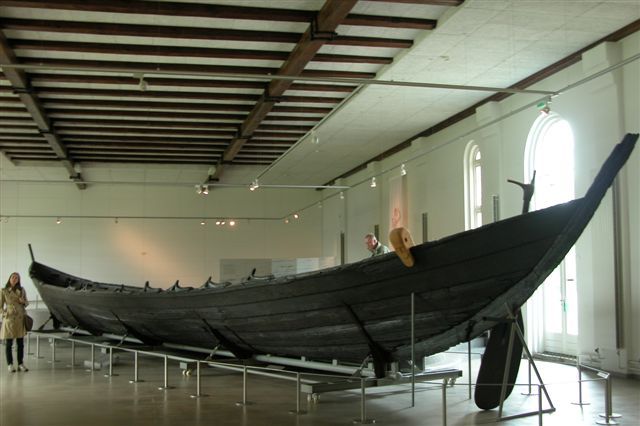
For centuries, the image of the Viking has been largely shaped by sagas and artistic interpretations that often leaned towards the ferocious and untamed. We pictured rugged warriors, perhaps helmeted, their faces obscured by the passage of time or the limitations of ancient artistic traditions. Yet, a recent rediscovery from the depths of a museum archive in Denmark is not only captivating researchers but is also vividly redrawing our understanding of these medieval seafarers, particularly their sophisticated sense of self and style.
This small, unassuming artifact, hidden away for over two hundred years, offers an unprecedented glimpse into the Viking Age. It is a testament to the power of meticulous archaeological curation and the quiet revolution that a single object can ignite. Far from a generic depiction, this miniature bust is so richly detailed that it grants us what experts are calling the closest representation we will ever get to a portrait of an actual Viking.
Join us on a journey through this extraordinary discovery, as we meticulously examine the tiny figurine that has emerged from the shadows, shedding new light on the daily lives, fashion, and even the self-image of the Viking elite. We’ll delve into its intricate features, the story of its rediscovery, and what its exquisite craftsmanship tells us about a civilization often misunderstood.
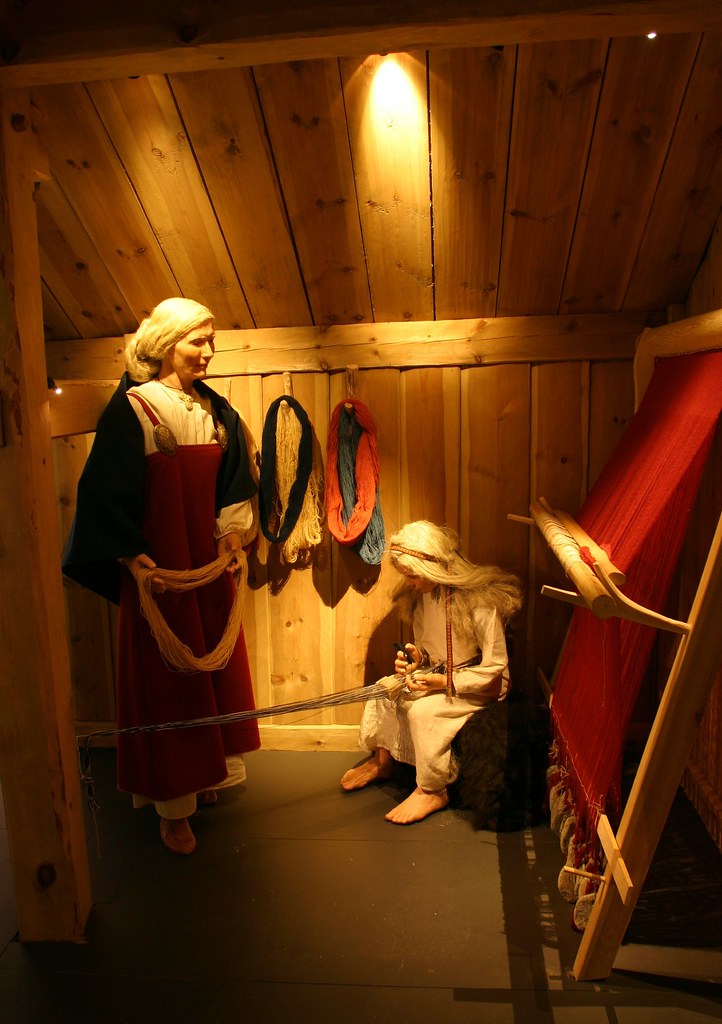
1. **The Miniature Bust’s Astonishing Rediscovery**
Imagine the quiet hum of a museum storage room, filled with untold treasures and forgotten histories. It was in such a place, preparing for an exhibition on Viking Age seeresses, that curator Peter Pentz of the National Museum of Denmark stumbled upon an object that would profoundly alter our understanding of the Viking Age. He described the moment with a palpable sense of surprise: “When I encountered him in one of our storage rooms a few years ago, I was quite surprised – he just sat there, staring straight at me, and I had never before seen such a Viking.”
This small walrus ivory figurine, cataloged as one of the museum’s oldest items under number 589, had languished in storage since it became one of the institution’s earliest acquisitions in 1798. Discovered in 1796 in an equestrian burial mound at Viken, near the Oslofjord in southern Norway, it had remained largely unexamined for over two centuries. Its quiet existence belied the immense historical narrative it contained.
Pentz’s serendipitous encounter was more than just finding an old artifact; it was akin to discovering a window into a previously obscured world. The figurine’s detail and expressive quality immediately struck him, differentiating it from almost all other known Viking art. This rediscovery was not merely a curiosity but a crucial piece of the puzzle for understanding Viking identity.
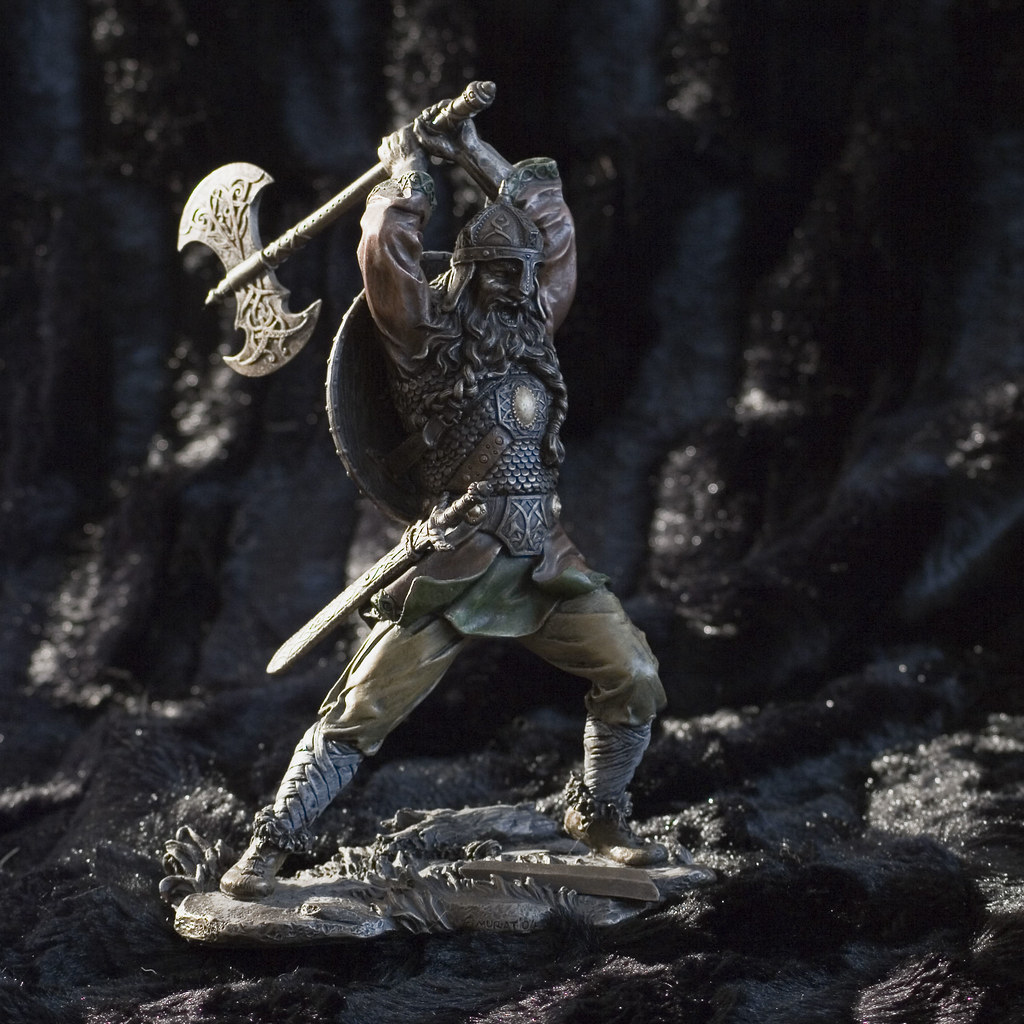
2. **Physical Description and Exquisite Craftsmanship**
Standing at just over one inch (three centimeters) tall, this miniature bust is a marvel of ancient craftsmanship. Carved from precious walrus ivory, a costly material imported from Greenland and highly prized throughout northern Europe during the Viking Age, its very composition speaks to the status of its intended owner or the figure it represents. The use of such an expensive medium suggests that the object was made for someone of high rank.
While the figurine is not in perfect condition, with its arms clearly damaged over the centuries, the core details that make it so exceptional remain remarkably clear. The precision of the carving is extraordinary, especially when contrasted with most surviving Viking artwork. Viking art generally favored abstract designs and intricate animal patterns, making detailed human depictions exceedingly rare.
This meticulous carving highlights an artistry that went beyond mere representation, aiming for a degree of individual likeness. It’s a testament to the skill of the artisan who brought this tiny figure to life, imbuing it with a distinct personality and an almost portrait-like quality. The material, size, and remaining details all contribute to its unparalleled significance.
Read more about: Beyond the Garage Doors: Unveiling 10 Automotive Masterpieces from Jay Leno’s Esteemed Collection

3. **A Face from a Thousand Years Ago: Features and Expression**
The most striking aspect of the figurine is the man’s face itself, which immediately conveys a sense of individuality and character. Curator Peter Pentz remarked on this unique quality, stating, “The most surprising thing for me is his expression. Most Viking renderings of human figures are quite simple, and they are not really human-like.” This figure, however, is profoundly human.
His shrewd and expressive face makes one suspect that he is more than just a generic figure. Pentz described him as “extremely detailed and he is so very expressive, displaying a mischievous — or even malicious — facial expression.” This vivid portrayal offers a rare psychological depth to a Viking depiction, suggesting a personality rather than just a type.
Unlike the often-abstract or simplified human figures found on coins or other artifacts, this miniature bust presents a man with a clear, defined gaze and a powerful presence, despite its diminutive size. It’s a face that seems to stare back, inviting contemplation about the individual it might represent and the world he inhabited a millennium ago.
Read more about: Shadows of the Past: Putin’s Campaign to Rewrite History and Eradicate a People
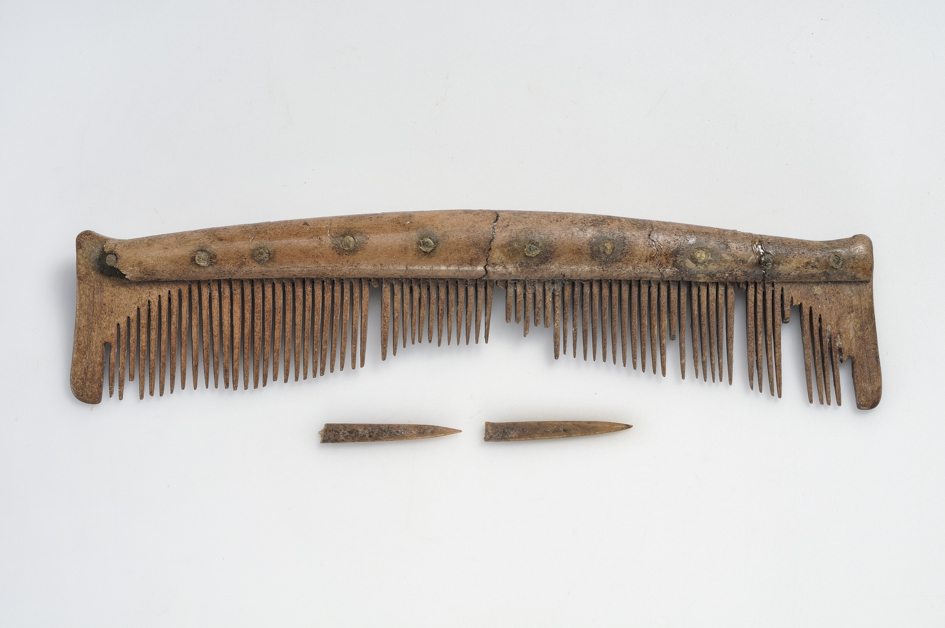
4. **The Intricacy of Viking Hair-Styling**
One of the most significant revelations from this small carving concerns Viking grooming habits, particularly hairstyles. Prior to this discovery, detailed information regarding Viking hairstyles was largely unknown. This figurine, however, provides an unprecedented amount of specific detail that changes everything. Pentz enthusiastically noted, “Up until now, we didn’t have any detailed information regarding Viking hairstyles, but here we have all the details.”
The man depicted sports a sophisticated hairstyle: his hair is parted at the middle, with a distinct wave on one side of his head that gracefully exposes his ear. The hair at the back is cut short, creating a neat and deliberate look. Even a small curl or tuft of hair above the ear is visible, testifying to the artisan’s incredible precision and the owner’s attention to detail.
“This is the first time we have a male Viking figure whose hair is visible from all angles. It’s unique,” Pentz explained. This meticulous rendering of hair offers invaluable insight into the fashion trends and aesthetic preferences of the Viking elite, showcasing a level of personal grooming that challenges many modern misconceptions about Viking appearance.
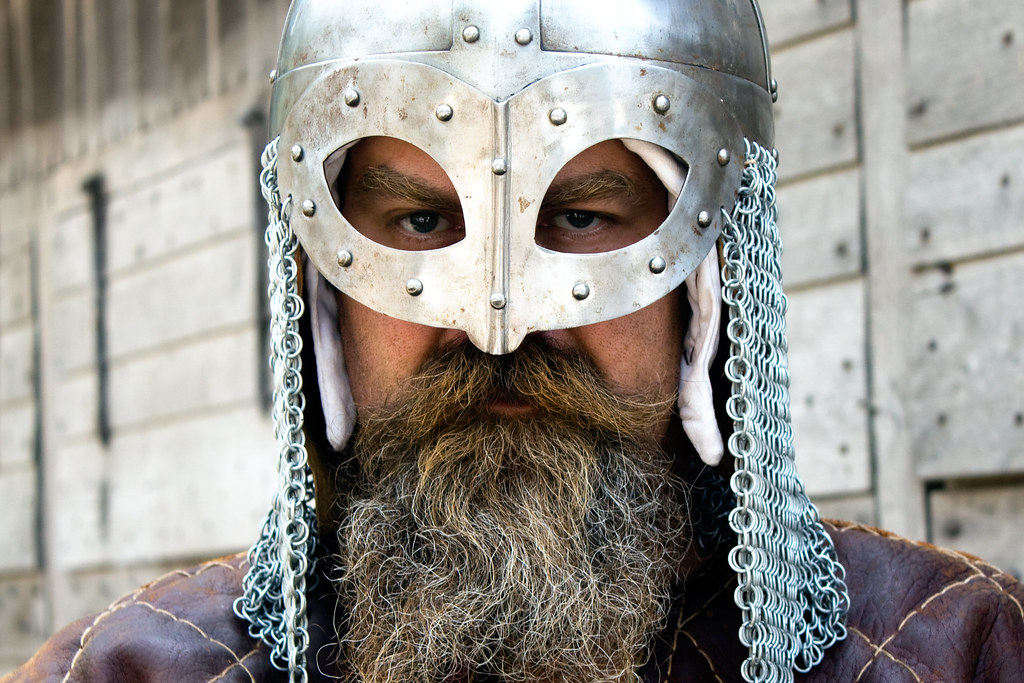
5. **The Art of the Viking Beard and Mustache**
Beyond the elaborate hairstyle, the figurine also provides an equally detailed look at Viking facial hair, revealing a level of artistry and personal care that was previously unrecorded. The man’s facial hair is impeccably detailed, contributing significantly to his distinguished appearance. He sports a thick, imperial mustache that commands attention, suggesting a well-maintained and stylish look.
Complementing the mustache is a long, intricately braided goatee. This isn’t just a simple beard; it’s a carefully styled and likely status-symbolic element of his facial presentation. The presence of such a detailed braid indicates a commitment to grooming that goes beyond basic maintenance, speaking to cultural norms of adornment and perhaps even personal pride.
Furthermore, the carving clearly shows defined sideburns, framing the face with an intentional design. These combined elements—the mustache, braided goatee, and sideburns—paint a picture of a Viking man who was meticulously groomed and cared for his appearance, suggesting an aesthetic sensibility far more refined than often portrayed.
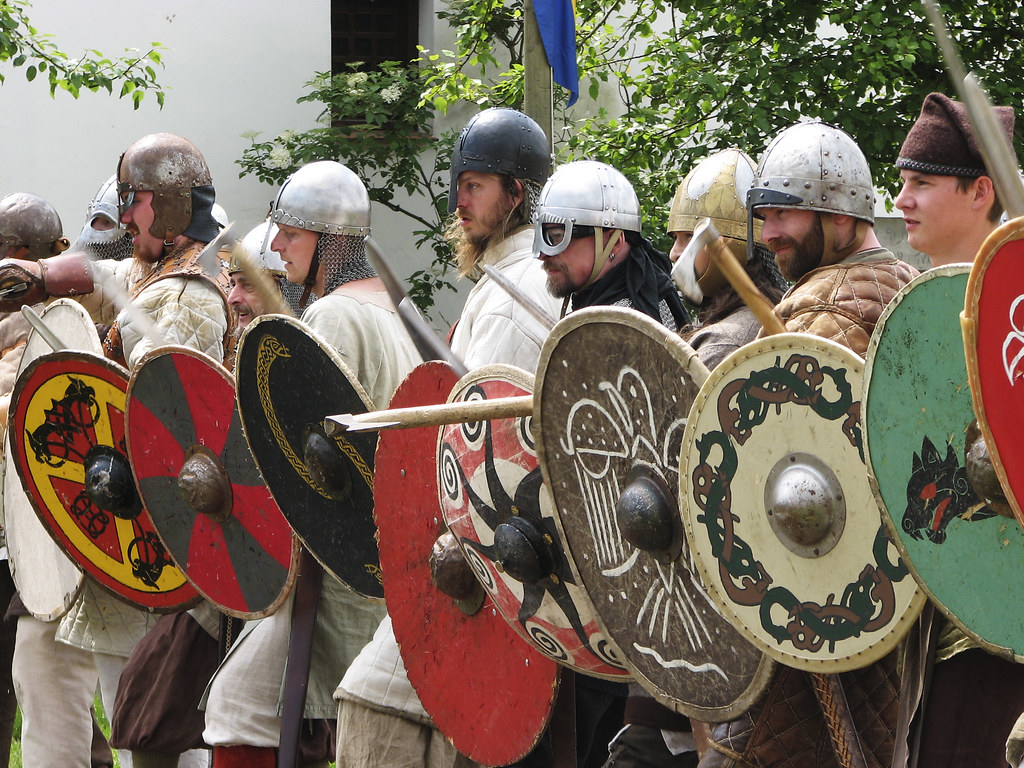
6. **Upending Assumptions: Grooming and Stylishness of the Viking Elite**
The overall image conveyed by this three-centimeter-high artifact directly challenges long-held stereotypes of Vikings as savage, wild, or unkempt barbarians. The figure’s well-styled beard and hair, along with his shrewd face, suggest a level of sophistication and personal presentation that was previously underexposed in historical records and art. As curator Peter Pentz aptly put it, “If you think of Vikings as savage or wild, this figure is proving the opposite, actually. He is very well-groomed.”
This meticulous attention to grooming, from the precisely parted and waved hair to the braided goatee and defined sideburns, speaks volumes about the self-image of the Viking elite. A hair design like his, “which is very neat — you can see a little curl or tuft of hair running over the ears — (suggests) this guy is at the top,” Pentz explained, emphasizing the connection between grooming, status, and power during the Viking era.
The expensive walrus ivory from which the figurine was carved further reinforces the notion that this object, and likely the man it represents, belonged to the highest echelons of Viking society. It signifies not just fashion, but a deliberate cultivation of an image that symbolized wealth, power, and refined taste, providing an invaluable window into the nuanced realities of Viking social structures and personal identity.
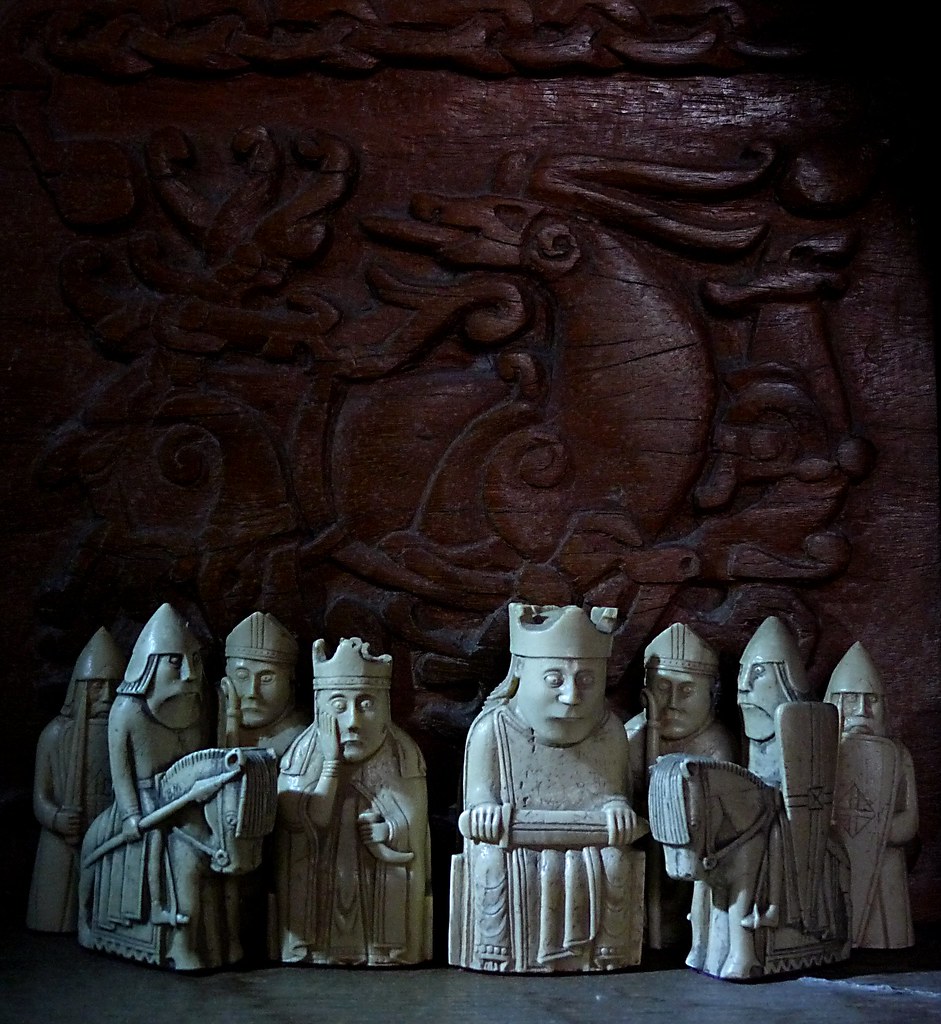
7. **The Figurine’s Role in Hnefatafl, the “Viking Chess”**
Beyond its astounding artistic details, researchers have identified the figurine’s original purpose as a game piece, specifically the “king” in the ancient Norse board game Hnefatafl. This strategic game, often referred to as “Viking chess,” was a prevalent pastime across Northern Europe between the 8th and 11th centuries, before the eventual dominance of modern chess. Its rules, though varied by region, generally involved a central “king” piece protected by defenders, attempting to escape from attacking forces.
The discovery of the figurine in an equestrian burial mound in Viken, Norway, alongside several button-shaped bone game pieces, strongly supports its interpretation as a component of this beloved Viking-era game. While no Hnefatafl board was found with the figurine—boards were often carved on stone or wood and might not survive—its very existence as a central player in such a game speaks volumes about the intellectual pursuits and leisure activities of the Viking elite. It suggests a culture that valued strategic thinking and engaged in sophisticated forms of entertainment.
As the king piece, this exquisitely carved figure would have held the most important position on the Hnefatafl board, symbolizing power, leadership, and perhaps the very fate of its owner’s simulated kingdom. Its presence in a burial context, particularly an equestrian one, further underscores its significance, hinting at a personal connection or status symbol that transcended mere recreation. The game itself was a microcosm of Viking society, with its emphasis on defense, attack, and the strategic positioning of a central, revered leader.
This miniature bust, serving as the paramount piece in Hnefatafl, transforms our understanding of Viking daily life, revealing not only their craftsmanship but also their intellectual engagement. It offers a tangible link to their social practices and the ways in which they spent their leisure time, further enriching the tapestry of a civilization often simplified by modern interpretations. The game was more than just a pastime; it was a reflection of their world, and this king piece stood at its very heart.
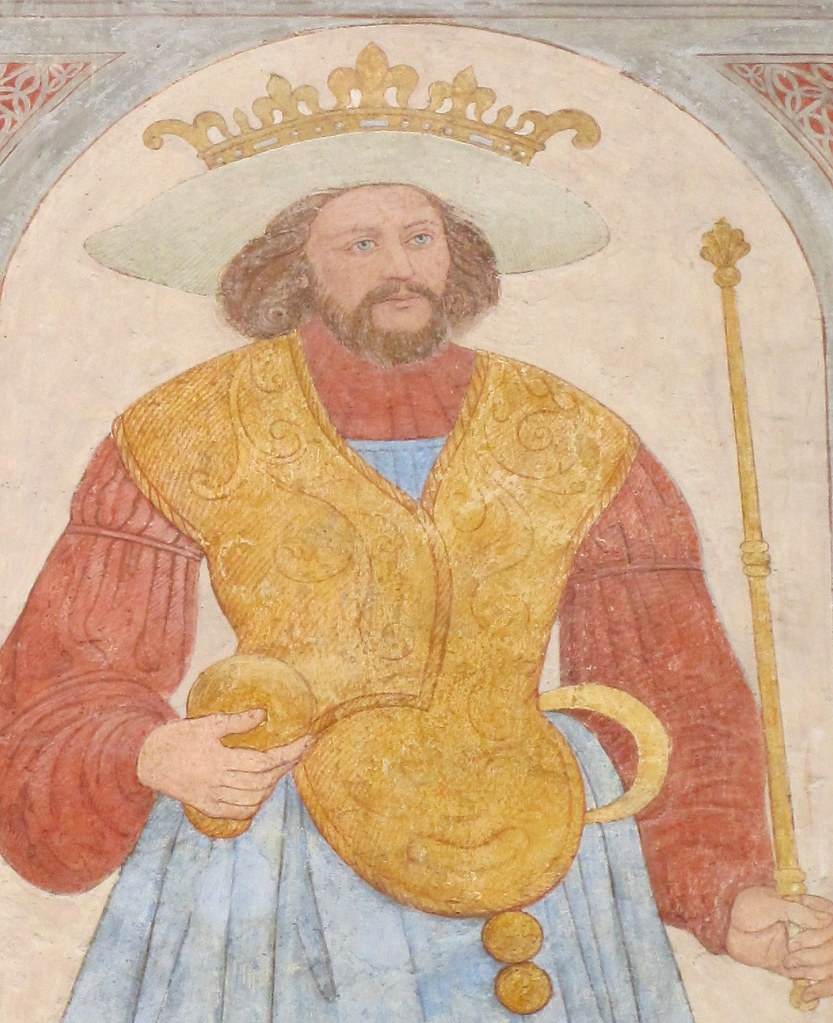
8. **A Royal Connection? The Link to King Harald Bluetooth**
The precise dating of the figurine to the late 10th century immediately sparks a fascinating historical connection: the reign of one of the most famous Viking kings, Harald Gormsson, known posthumously as Harald Bluetooth. This powerful monarch, who ruled from approximately A.D. 958 to 986, is celebrated for uniting Denmark and bringing Christianity to the region. The artifact’s discovery site in Viken, near Oslofjord in southern Norway, also falls within the historical boundaries of Harald Bluetooth’s vast realm, which encompassed parts of southern Norway and Sweden.
The striking resemblance of the figurine’s sophisticated appearance—its meticulously styled hair and beard—to what might be expected of a high-status individual, even a king, has naturally led to tantalizing speculation. Could this finely detailed carving be a representation of Harald Bluetooth himself? Such a thought offers an exciting direct link to a legendary figure whose influence continues to resonate today, even inspiring the name of a ubiquitous networking standard that “unites” devices, much as Harald united his lands.
However, while the temporal and geographical evidence strongly aligns, Peter Pentz, the curator who rediscovered the piece, maintains a cautious scholarly approach. He carefully states, “I don’t say that this is a portrait of Harald,” acknowledging the lack of definitive proof. Despite this academic prudence, the possibility remains a compelling aspect of the figurine’s story. It is certainly “depicting a late tenth-century king,” as Pentz also noted, underscoring its royal implications even if it isn’t an exact likeness of Harald.
Harald Bluetooth, son of Gorm “the Old,” earned his famous nickname possibly due to a discolored tooth, though the actual reason remains shrouded in time. His reign marked a pivotal period of transition and consolidation in Scandinavian history. The figurine, whether an actual portrait or merely a symbolic representation of a powerful contemporary ruler, serves as a remarkable testament to the era, providing an intimate, albeit small, glimpse into the possible appearance and cultivated image of the Viking elite during his influential rule.
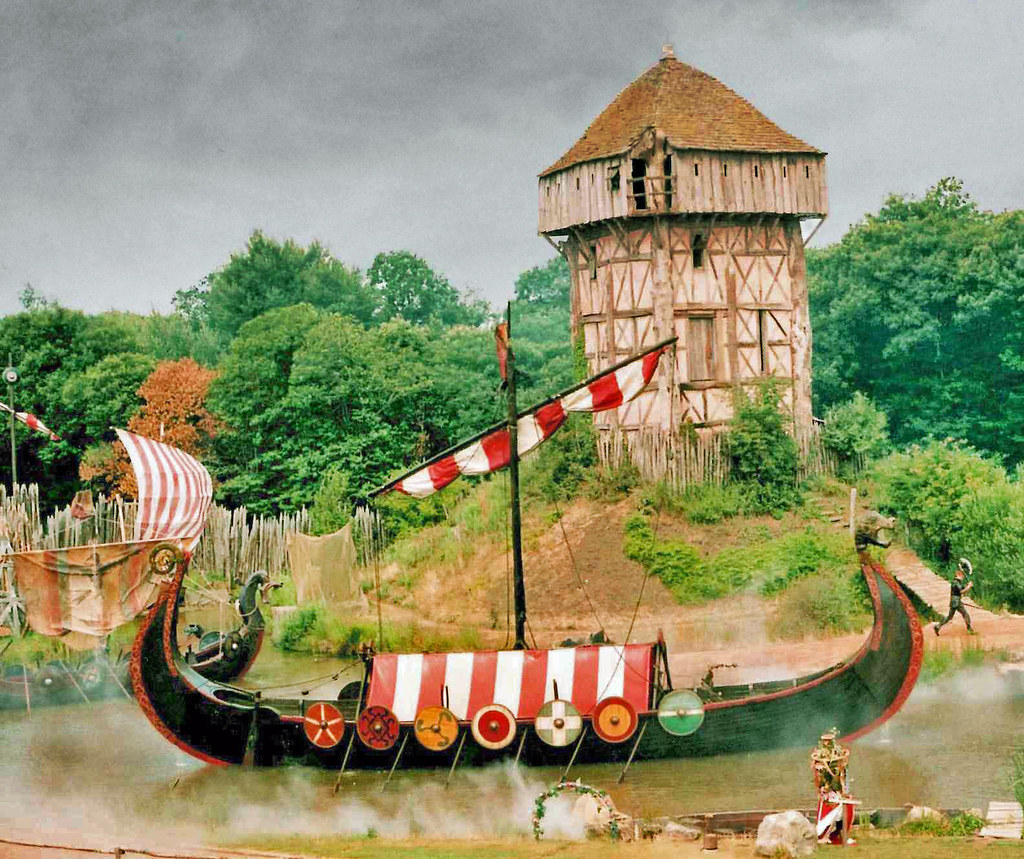
9. **Beyond Generic: A Window into Viking Art and Individual Portrayal**
The miniature bust stands as an unparalleled anomaly in the corpus of Viking Age art, offering a profound insight into a facet of their artistic expression previously thought to be almost nonexistent: individual human portraiture. For centuries, our understanding of Viking aesthetics has been dominated by intricate, often zoomorphic designs and abstract patterns that adorned everything from jewelry to runestones and ships. These elaborate motifs, featuring fantastical animals like dragons, were undeniably masterful, yet human depictions were exceedingly rare and, when they did occur, typically generic and simplified, lacking distinct individuality.
This makes the figurine’s expressive face and meticulously rendered features an artistic revelation. “Most Viking renderings of human figures are quite simple, and they are not really human-like,” Pentz observed, highlighting the stark contrast. The shrewd, perhaps even “mischievous — or even malicious — facial expression” of this small figure immediately sets it apart. It suggests an artistic intent that transcends mere symbolic representation, venturing into the realm of capturing personality and individual likeness.
The precision and detail of the carving are extraordinary, a testament to the artisan’s exceptional skill and an indication that this was no ordinary commission. Unlike the often-stylized figures found on coins, which served a broader, impersonal function, this figurine embodies a unique specificity. It suggests a desire, perhaps from the patron, to immortalize or represent a particular individual, or at least a highly idealized, distinguished type of person.
In an era where human faces in art were largely symbolic or schematic, this walrus ivory bust demands a re-evaluation of Viking artistic capabilities and intentions. It offers a rare opportunity to see a face from a thousand years ago, presented with a degree of realism and character that challenges our preconceived notions of Viking art as exclusively abstract or animal-focused. It broadens our understanding of their artistic range and their capacity for conveying nuanced human expression.
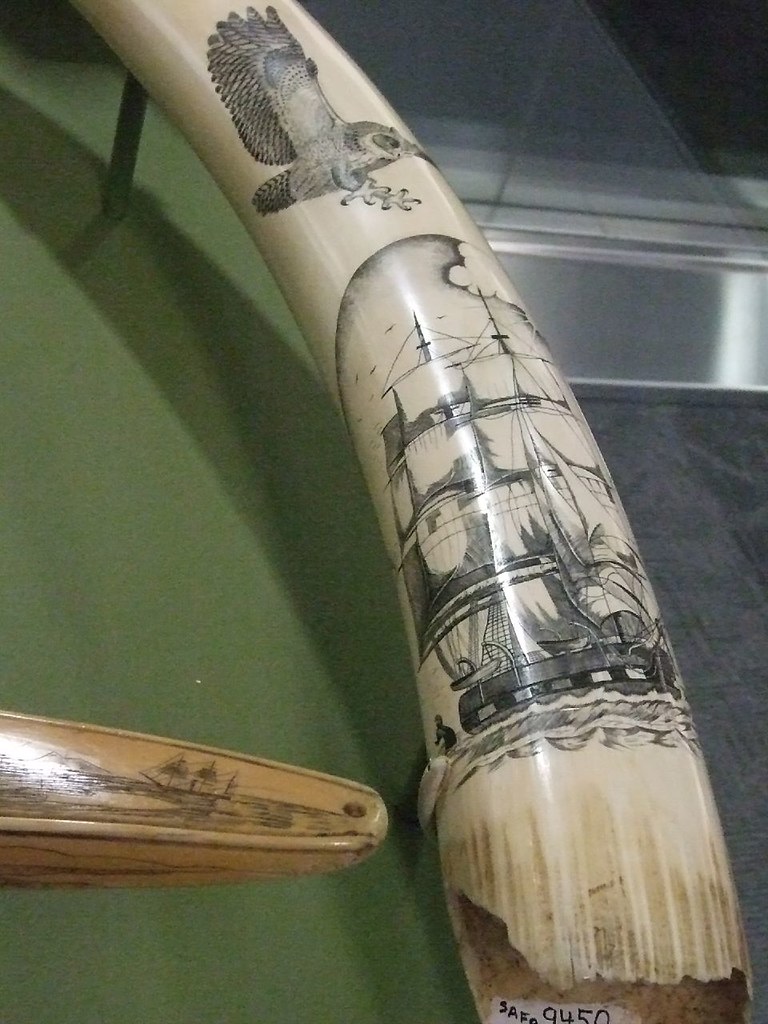
10. **Symbol of Status: Walrus Ivory and Elite Identity**
The choice of material for this diminutive masterpiece speaks volumes about the status and wealth of its owner or the figure it represents. Carved from walrus ivory, the figurine immediately signals its immense value. Walrus ivory was not a readily available local resource in Scandinavia; it was a costly and highly prized commodity, imported from distant Greenland, then a Norse colony. Its presence in an artifact indicates significant wealth and access to prestigious trade networks.
During the Viking Age, luxury goods crafted from rare materials were potent symbols of status, power, and influence within the elite circles. Owning an object made of walrus ivory was akin to displaying one’s affluence and connections, signifying a place at the very top of the social hierarchy. The material itself, exotic and difficult to acquire, imbued the figurine with an inherent prestige that went beyond its artistic merit.
Curator Peter Pentz explicitly linked the material to social standing, noting that “the expensive ivory that the figurine was carved out of indicates that it was valuable, and likely belonged to a wealthy elite.” This small, three-centimeter figure, therefore, becomes a tangible representation of the economic structures and social stratification of Viking society. It illustrates how material possessions were integral to projecting and reinforcing one’s identity as a person of high rank.
The fact that such a valuable piece was likely used in a game, albeit a “king” piece, further emphasizes the sophisticated lifestyle of the Viking elite. Their leisure activities were not confined to simple pursuits but extended to strategic games played with objects of immense material and symbolic worth. This figurine, therefore, serves as a powerful testament to the intricate relationship between material culture, wealth, and the construction of elite identity in the Viking Age.
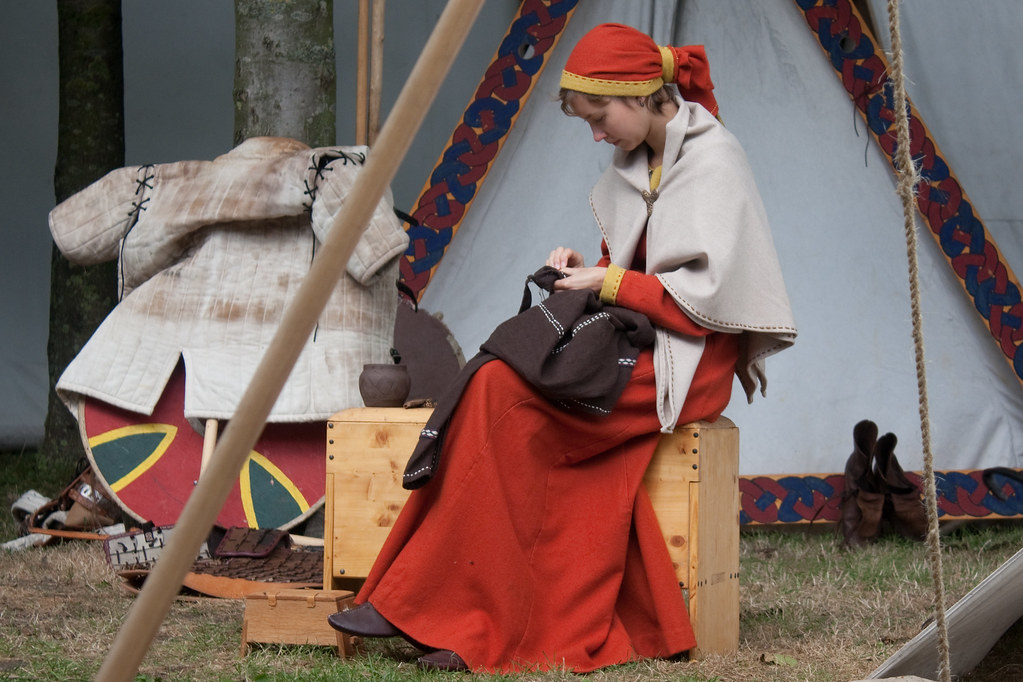
11. **Rewriting History: Challenging Stereotypes and Nuancing Viking Identity**
The rediscovery and meticulous study of this small walrus ivory figurine are profoundly impacting how we perceive the Vikings, effectively rewriting aspects of their history and challenging deeply entrenched stereotypes. For too long, the popular image of Vikings has been largely dominated by caricatures of savage, wild, and unkempt barbarians—ferocious raiders clad in helmets (often inaccurately depicted with horns) and driven solely by conquest. This miniature bust, however, presents a dramatically different narrative.
As Peter Pentz insightfully stated, “If you think of Vikings as savage or wild, this figure is proving the opposite, actually. He is very well-groomed.” The figurine’s intricate hairstyle, neatly trimmed beard, and carefully styled mustache, alongside its shrewd and individualistic facial expression, portray a sophisticated, self-aware individual who clearly valued personal presentation and aesthetics. This level of meticulous grooming suggests a culture that prioritized appearance, distinguishing the elite through refined style.
This artifact compels us to look beyond the often-sensationalized accounts of Viking raids and appreciate the multifaceted nature of their society. It underscores that alongside their prowess as seafarers and warriors, there existed a vibrant cultural life that included strategic games, sophisticated artistry, and a keen sense of personal style. The “stylishness and grooming that upends assumptions about how Vikings looked” serves as a powerful corrective to historical oversimplifications.
By offering what experts call “the closest representation we will ever get to a portrait of an actual Viking,” this figurine provides an invaluable window into the nuanced realities of Viking identity. It enriches our understanding by adding layers of complexity to their self-image, demonstrating that the Viking elite were not only powerful but also refined, fashion-conscious individuals who carefully cultivated their public persona. It reminds us that history is rarely as monolithic as it sometimes appears, and even the smallest artifact can reshape grand narratives.
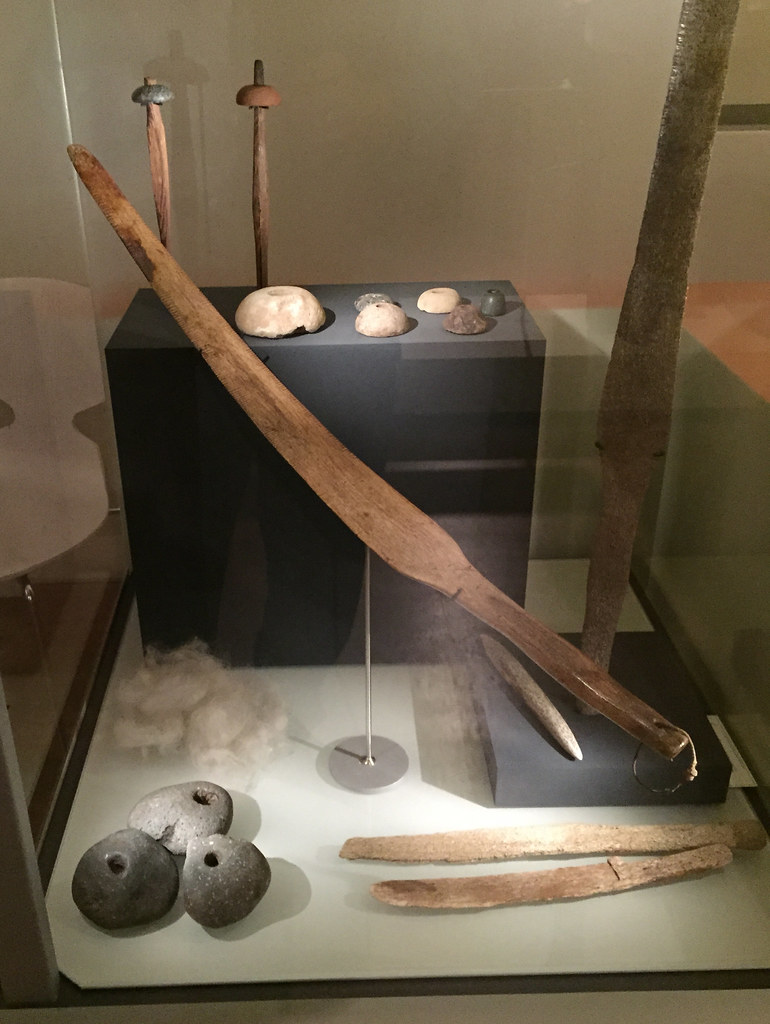
12. **Enduring Impact: The Figurine’s Ongoing Relevance in Archaeological Research**
The journey of this remarkable figurine—from its initial discovery in 1796, through two centuries of obscurity in museum storage, to its rediscovery and meticulous re-examination—highlights its enduring and evolving impact on archaeological discourse. This is not merely a historical curiosity but a dynamic artifact that continues to generate new insights and stimulate scholarly debate, making it a focal point for understanding the Viking Age.
Now prominently exhibited at the National Museum in Copenhagen as part of “The Wolf’s Warning” exhibition, the statuette has re-emerged from the shadows to captivate both researchers and the public alike. Its re-evaluation by Curator Peter Pentz has sparked a renewed focus on Viking personal appearance, artistic traditions, and social hierarchies. The ongoing analysis of its details—from the specific cut of the hair to the material choice—continues to inform discussions about Viking elite status, trade routes, and their artistic capabilities.
This single, small object has proven to be a catalyst for challenging established views. Its unique human depiction forces archaeologists and historians to reconsider the breadth of Viking art and the possibility of other undiscovered “portraits.” The careful distinction between a generic depiction and a potential individual likeness, even if not definitively Harald Bluetooth, pushes the boundaries of interpretation and the methods used to infer identity from archaeological finds.
Ultimately, the figurine’s story is a testament to the value of preserving and continually revisiting museum collections. It serves as a powerful reminder that even the oldest, seemingly mundane artifacts can hold revolutionary secrets, waiting for the right moment and the right eye to bring them back to life. Its journey from a forgotten corner to a spotlighted exhibit ensures its continued relevance, inspiring further research and enriching our collective understanding of a pivotal period in human history. The “quiet revolution that a single object can ignite” is still very much in progress, solidifying this figurine’s place as a cornerstone in Viking Age studies.



